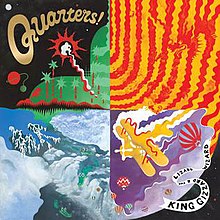Röt 형성
Röt Formation| Röt 형성 Stratigraphic 범위:애니시아 (또는 Bithynian) ~247–242 엄마 PreꞒ Ꞓ OSDCPTJKPg N↓. | |
|---|---|
 Stratigraphy고 트라이아스기 독일의 정도를 말한다. | |
| 유형 | 형성 |
| 단위 | Buntsandstein |
| Sub-units | 보라 색 지평선 5회원 |
| Underlies | 예나 형성 |
| Overlies | Plattensandstein &, Solling Formations |
| Lithology | |
| 1차 | 석회암, 이암, 셰일 |
| 기타 | 사암 |
| 위치 | |
| 좌표 | 51°30′N 11°54′E/51.5°N 11.9°ECoordinates:51°30′N11°54′E/51.5°N한 119.°E/51.5, 11.9 |
| 근사 paleocoordinates | 17°30′N 19°42′E/17.5°N되면서 1,987°E |
| 지역 | 삭센안할트, 바덴뷔르템베르크, 바바리아, 헤센 |
| 나라 | 독일. |
| 범위 | 중앙독일 |
뢰트 포메이션 또는 뢰튼 포메이션(독일어 뢰트 셰일)은 독일 분트산트슈타인의 지질학적 포메이션이다.그것은 미들 트라이아스기 에폭(지방 층층에서는 아니시안, 에게안, 비티니안)까지 거슬러 올라가는 화석을 보존한다.[1]이 형성은 플라텐슈타인과 솔링 형성에 우선하며 제나 형성에 의해 중첩된다.[2][3]
얕은 해양 환경에 퇴적된 이 형성의 림스톤, 갯돌, 셰일즈, 사암석 등은 초기 대룡, 템노스폰딜, 물고기, 곤충의 화석을 제공했다.
화석함량
그 형성은 다음과 같은 화석을 제공했다.[1]
| 그룹 | 택사 | 메모들 | 이미지들 |
|---|---|---|---|
| 템노스폰딜스 | 에로시클로토사우루스보슈미디 | [4][5] | |
| 헵타사우루스 카펠렌시스(마스토돈사우루스 카펠렌시스라고 설명) | [4] | ||
| 카피토사우루스 인데트. | [6] | ||
| 파충류 | 아모토사우루스 로펠덴시스 | [7] | |
| 아노모오다이오돈크레지시카시 | [7] | ||
| 크레넬로사우루스 니그로실바누스 | [7] | ||
| 키마토사우루스에리카에 | [8] | ||
| C. 에리테우스 | [8] | ||
| 프리데리시아누스 | [9] | ||
| 스클러로사우루스 아르마투스 | [10] | ||
| 마마니아팔레오트리아디차 | [11] | ||
| 대왕새우과. | [6] | ||
| 물고기 | 셀라치 인데. | [6] | |
| 곤충들 | 로에니엘라그라눌라타 | [12] |
상관 관계
초기 대룡의 화석을 바탕으로 한 이 형성은 러시아의 동구즈 형성, 중국의 상부 헤상구 형성, 아리조나주의 무엔코피 형성의 홀브룩 회원과 상관관계가 있다.[3]
참고 항목
참조
참고 문헌 목록
- Butler, R. J.; Brusatte, S. L.; Reich, M.; Nesbitt, S. J.; Schoch, R. R.; Hornung, J. J. (2011). "The sail-backed reptile Ctenosauriscus from the latest Early Triassic of Germany and the timing and biogeography of the early archosaur radiation". PLOS ONE. 6 (10): 1–28. Bibcode:2011PLoSO...625693B. doi:10.1371/journal.pone.0025693. PMC 3194824. PMID 22022431.
- Sues, H.-D.; Reisz, R. R. (2008). "Anatomy and Phylogenetic Relationships of Sclerosaurus armatus (Amniota: Parareptilia) from the Buntsandstein (Triassic) of Europe". Journal of Vertebrate Paleontology. 28 (4): 1031–1042. doi:10.1671/0272-4634-28.4.1031. S2CID 53967912.
- Fraser, N. C.; Rieppel, O. (2006). "A new protorosaur (Diapsida) from the Upper Buntsandstein of the Black Forest, Germany". Journal of Vertebrate Paleontology. 26 (4): 866–871. doi:10.1671/0272-4634(2006)26[866:ANPDFT]2.0.CO;2.
- Rieppel, O (1999). "Variation of cranial characters in Cymatosaurus "gracilis" Schrammen 1899 (Reptilia, Sauropterygia), and its implications for systematics". Paläontologische Zeitschrift. 73 (3–4): 369–375. doi:10.1007/BF02988047. S2CID 84238070.
- Schoch, R. R.; Werneburg, R. (1999). "The Triassic labyrinthodonts from Germany". Zentralblatt für Geologie und Paläontologie, Teil I. 7–8: 629–650.
- Ebel, K.; Falkenstein, F.; Haderer, F.-O.; Wild, R. (1998). "Ctenosauriscus koeneni (v. Huene) und der Rauisuchier von Waldshut - Biomechanische Deutung der Wirbelsäule und Beziehungen zu Chirotherium sickleri Kaup". Stuttgarter Beiträge zur Naturkunde, Serie B. 261: 1–18.
- Rieppel, O (1997). "Revision of the sauropterygian reptile genus Cymatosaurus v. Fritsch, 1894, and the relationships of Germanosaurus Nopcsa, 1928, from the Middle Triassic of Europe". Fieldiana: Geology. New Series. 36: 1–36.
- Ansorge, J (1994). "Rhoeniella granulata gen. et sp. nov. (Insecta: Hemiptera) aus dem Oberen Buntsandstein der Rhön (Hessen)". Senckenbergiana Lethaea. 74: 325–327.
- Ortlam, D (1967). "Fossile Böden als Leithorizonte für die Gliederung des Höheren Buntsandsteins im nördlichen Schwarzwald und südlichen Odenwald". Geologisches Jahrbuch. 84: 485–590.
- Von Huene, F (1958). "Ein Pseudosuchier aus dem Buntsandstein des Schwarzwalds [A pseudosuchian from the Buntsandstein of the Black Forest]". Jahreshefte des Vereins für Vaterländische Naturkunde in Württemberg. 113: 111–112.









